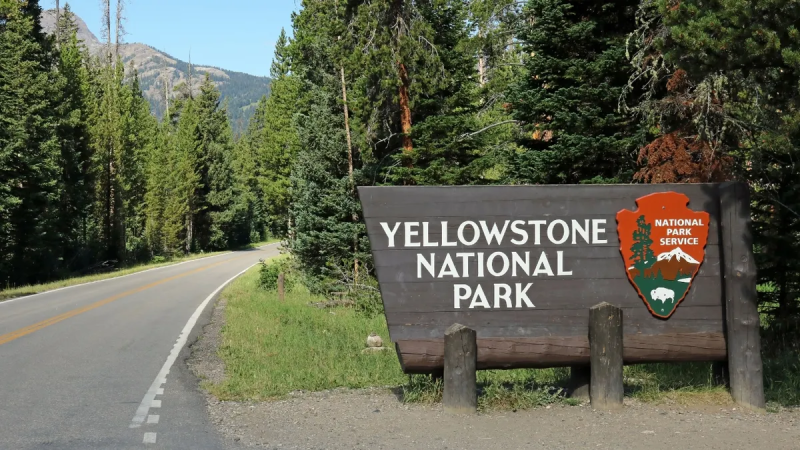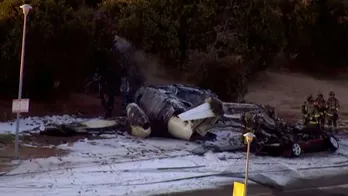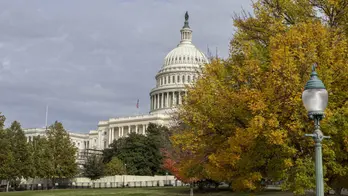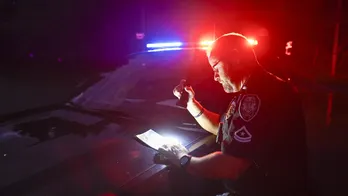'Zombie deer disease' concerns scientists over possible spread to humans
The discovery of Yellowstone National Park’s first case of chronic wasting disease (CWD) last month has raised concerns that the fatal brain disease may someday spread to humans, according to some scientists.
A deer carcass in the Wyoming area of the park tested positive for the highly contagious prion disease that can also cause weight loss, stumbling, listlessness and neurological symptoms, according to the CDC. It has been spotted in deer, elk, reindeer and moose in areas of North America, Canada, Norway and South Korea.
Symptoms can take up to a year to develop and some have dubbed it the "zombie deer disease" since it changes in the hosts’ brains and nervous systems, leaving animals drooling, lethargic, emaciated, stumbling and with a telltale "blank stare," according to The Guardian. It is fatal, with no known treatments or vaccines.
WISCONSIN DEER FARM INFECTED WITH FATAL BRAIN DISEASE

Some scientists are raising concerns that a fatal brain disease in deer, elk, reindeer and moose may someday spread to humans following Yellowstone National Park's first case of the disease. (National Park Service / Neal Herbert)
And now scientists are sounding the alarm that it could infect humans, although no known case has ever been recorded.
Epidemiologists say the absence of a "spillover" case yet does not mean it will not happen. CWD is one of a cluster of fatal neurological disorders that includes Bovine spongiform encephalopathy (BSE), commonly referred to as "mad cow disease."
"The BSE outbreak in Britain provided an example of how, overnight, things can get crazy when a spillover event happens from, say, livestock to people," Dr. Cory Anderson told The Guardian. Anderson is a program co-director at the Center for Infectious Disease Research and Policy (CIDRAP).
"We’re talking about the potential of something similar occurring. No one is saying that it’s definitely going to happen, but it’s important for people to be prepared," Anderson added.
He added that what’s also worrying is that there is no known way to effectively and easily eradicate it, "neither from the animals it infects nor the environment it contaminates."
Anderson said that once an environment is infected, the pathogen is extremely hard to eradicate. It can persist for years in dirt or on surfaces, and scientists report it is resistant to disinfectants, formaldehyde, radiation and incineration at 1,100 F, according to The Guardian.

A group of elk along the Temporary North Entrance Road at Yellowstone National Park on Jan. 11, 2023. Some scientists are raising concerns that a fatal brain disease in deer, elk, reindeer and moose may someday spread to humans following Yellowstone National Park's first case of the disease. (NPS/Jacob W. Frank)
YELLOWSTONE NATIONAL PARK FINDS 1ST CASE OF FATAL BRAIN DISEASE AFTER DEER CARCASS TESTS POSITIVE
The CDC on its website says that some animal studies suggest CWD poses a risk to certain types of non-human primates, like monkeys, that eat meat from CWD-infected animals or come in contact with brain or body fluids from infected deer or elk.
"These studies raise concerns that there may also be a risk to people," the CDC website reads. "Since 1997, the World Health Organization has recommended that it is important to keep the agents of all known prion diseases from entering the human food chain."
Parks officials said that since the mid-1980s, the fatal brain disease has spread across Wyoming and is now found in most of the state. The disease is estimated to be found in 10-15% of the mule deer near Cody that migrate to the southeastern section of Yellowstone in the summer. Yellowstone National Park said last month that the long-term effect of the disease on deer, elk and moose in Yellowstone is uncertain.
The Alliance for Public Wildlife, according to The Guardian, estimated in 2017 that 7,000 to 15,000 CWD-infected animals a year were unwittingly being eaten by humans, and that the number was expected to increase by 20% annually.

An entrance sign along U.S. Highway 212 at the northeast entrance into Yellowstone National Park in Wyoming. A deer carcass in Yellowstone National Park tested positive for the highly contagious prion disease last month, leading some scientists to believe it may some day spread to humans. ((Photo by: Education Images/Universal Images Group via Getty Images))
CLICK HERE TO GET THE FOX NEWS APP
In 2005, researchers started observing 80 people who mistakenly ate the infected meat and found that the group had "no significant changes in health conditions," according to USA Today.
Still, with the hunting season underway, the CDC recommends that hunters "strongly consider having those animals tested before eating the meat." The agency also advises hunters harvesting wild deer and elk from areas with reported CWD to check state wildlife and public health guidance to see whether testing of animals is recommended or required in a given state or region.
Meanwhile, Yellowstone staff have increased collaboration and information sharing with the Wyoming Game and Fish Department and other state agencies to identify areas within Yellowstone with increased risk for CWD. Monitoring for the presence of CWD in deer, elk and moose in the park has also been ramped up as has testing from carcasses.
Fox News’ Stephen Sorace contributed to this report.
Disclaimer: The copyright of this article belongs to the original author. Reposting this article is solely for the purpose of information dissemination and does not constitute any investment advice. If there is any infringement, please contact us immediately. We will make corrections or deletions as necessary. Thank you.







